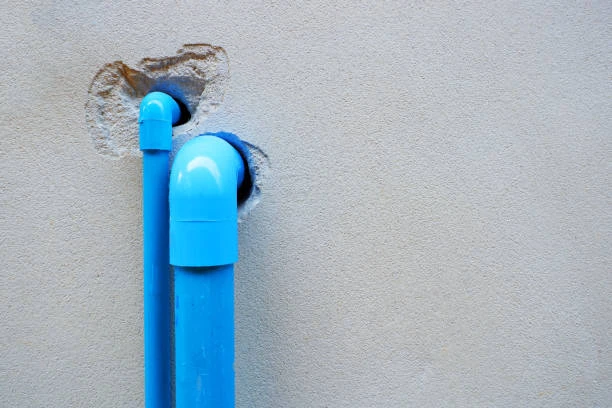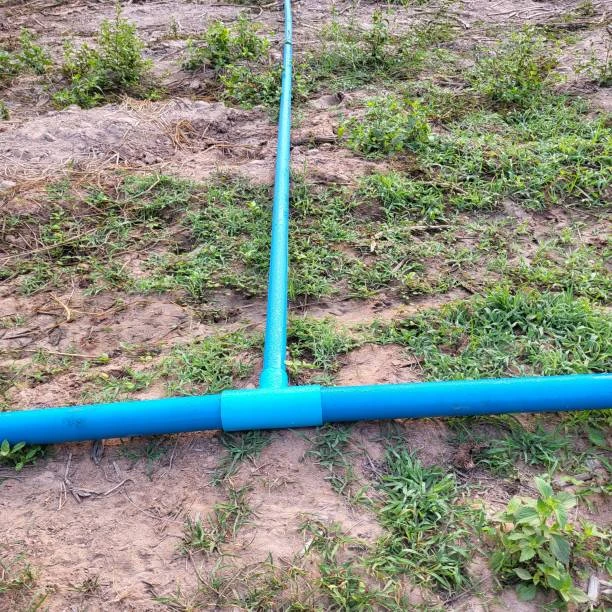In a significant development for the plumbing and construction industries, Lubrizol and Grasim Industries have officially broken ground on the world’s largest CPVC resin plant. This groundbreaking project promises to enhance the supply of CPVC fittings, contributing to the growing demand for durable and efficient plumbing solutions.
Understanding CPVC and Its Importance
Chlorinated Polyvinyl Chloride (PVC) is a thermoplastic material widely use for its exceptional resistance to heat and corrosion. This makes PVC fittings ideal for various applications, including residential, commercial, and industrial plumbing systems. The increasing adoption of PVC fittings is largely attribute to their ability to handle hot and cold water, making them suitable for a range of environments.
Benefits of CPVC Fittings
- Durability: PVC fittings have a long lifespan due to their resistance to rust, corrosion, and degradation from environmental factors. This durability leads to lower maintenance costs and fewer replacements over time.
- Ease of Installation: PVC fittings are lightweight and easy to handle, which simplifies the installation process. They can be join using solvent cement, allowing for quick assembly and reducing labor costs.
- Cost-Effectiveness: Compared to traditional materials like metal, PVC fittings are often more affordable. Their long-term performance further enhances their cost-effectiveness.
- Versatility: PVC fittings are suitable for various applications, from residential plumbing to industrial systems. Their ability to withstand high temperatures makes them particularly valuable in hot water applications.
The New CPVC Resin Plant: A Game Changer
The collaboration between Lubrizol and Grasim is poise to revolutionize the PVC market. The new plant, strategically located to optimize supply chains, will significantly increase the production capacity of PVC resins. This increased capacity is essential to meet the rising demand for PVC fittings globally.
Impact on Supply Chains
With the new plant operational, the supply chains for PVC fittings are expect to become more efficient. Localized production will reduce shipping times and costs, allowing manufacturers and distributors to meet customer needs more effectively. This localized approach is particularly beneficial in regions where demand for PVC fittings is rapidly increasing.
Innovations in PVC Technology
The new facility will not only boost production but also focus on technological innovations. Lubrizol and Grasim aim to enhance the quality and performance characteristics of PVC resins. This includes developing formulations that improve the thermal stability and pressure rating of PVC fittings, making them suitable for even more demanding applications.

Sustainability Considerations
As the construction industry increasingly focuses on sustainability, the new PVC resin plant is design with eco-friendly practices in mind. The manufacturing processes will prioritize energy efficiency and waste reduction. This commitment to sustainability aligns with global trends toward greener construction materials and practices.
Benefits for the Environment
Certainly! Here’s an expanded version of the benefits for the environment of CPVC fittings:
Environmental Benefits of CPVC Fittings
- Reduced Waste: Advanced manufacturing processes for CPVC fittings are design to minimize material waste. By optimizing production techniques, manufacturers can ensure that less raw material is discard, which helps reduce the overall environmental footprint of the production process.
- Energy Efficiency: The new CPVC resin plant aims to implement energy-efficient practices, utilizing renewable energy sources whenever possible. This approach not only lowers the energy consumption associated with production but also reduces greenhouse gas emissions, contributing to a more sustainable manufacturing process.
- Recyclability: As technology evolves, CPVC fittings are being develop with a focus on recyclability. This means that at the end of their lifecycle, CPVC materials can be process and reused, reducing the amount of plastic waste that ends up in landfills and promoting a circular economy.
- Lower Carbon Footprint: By streamlining production and reducing the need for transportation through localized manufacturing, the carbon emissions associate with shipping CPVC products are significantly lower. This contributes to a smaller overall carbon footprint for the plumbing industry.
- Durability and Longevity: The long lifespan of CPVC fittings means that they need to be replace less frequently than other materials, leading to less waste over time. Their resistance to corrosion and degradation also means they can maintain performance without the need for chemical treatments or coatings, further minimizing environmental impact.
These factors combined position CPVC fittings as an environmentally friendly choice in the construction and plumbing sectors, supporting sustainability initiatives in various industries.
Market Trends and Future Outlook
The demand for PVC fittings is projected to continue growing, driven by several factors:
- Urbanization: Rapid urbanization in developing countries is increasing the need for reliable plumbing solutions, boosting the demand for CPVC fittings.
- Infrastructure Development: Ongoing infrastructure projects worldwide require durable and efficient materials, creating further opportunities for PVC fittings.
- Water Conservation Initiatives: The push for water conservation is leading to increased adoption of efficient plumbing materials, including PVC fittings that minimize leaks and ensure reliable flow.
Conclusion
The groundbreaking of the world’s largest CPVC resin plant by Lubrizol and Grasim marks a pivotal moment for the CPVC fittings market. This initiative promises to enhance production capacity, drive innovation, and support sustainability efforts in the industry. As demand for PVC fittings continues to rise, this collaboration is set to play a crucial role in meeting the evolving needs of the construction and plumbing sectors.
FAQs
1. What are CPVC fittings used for?
CPVC fittings are use in plumbing systems for both hot and cold water applications, making them suitable for residential, commercial, and industrial installations.
2. What are the advantages of using PVC over traditional materials?
CPVC fittings are more durable, resistant to corrosion, lightweight, and often more cost-effective than traditional materials like metal.
3. How does the new PVC resin plant impact pricing?
The new plant is expect to increase supply, potentially stabilizing or lowering prices for PVC fittings due to improved production efficiency and reduced shipping costs.
4. Are CPVC fittings environmentally friendly?
Yes, PVC fittings can be manufacture with eco-friendly practices, and advancements may lead to more recyclable products in the future.
5. How can I ensure proper installation of PVC fittings?
Proper installation involves using the right solvent cement and following manufacturer guidelines. It’s advisable to consult with a professional plumber for best results.


















